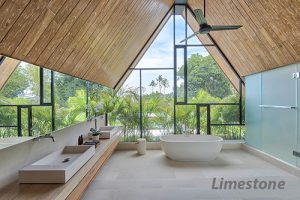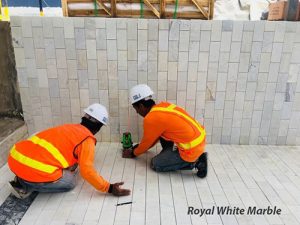Limestone is formed mainly in seawater, either as a mud-deposit on the bottom of the sea/ocean and often as a reef (Great Barrier Reef-Australia). It consists of Calcium Carbonate and lots of water, and often some clay and organic debris from animals and plants. When it’s changed into rock, due to high pressure and uplifted to the surface, it shows lots of small calcite crystals, which reflect the light. Often you can see “streaks” of clay in it, and bluestones have abundant organic debris in the structure, which make it a special type of stone.

Once regional temperatures reaches 600-800 degrees with substantial loading of 1-2 km sediments on top, metamorphosis takes place;. most of the water is ex-pulsed, and clay concentrated, sometimes the organic matter changes into graphite making the stone very dark. Nero Marquina is a typical example of this process.
Density of limestone is often around 2.65-2.68, once it gets more compressed it increases to 2.73-2.78. This mainly is caused by the calcite crystals becoming larger, and the loss of water. The stone becomes as a result less “glittery” in full sunlight.

Marbles have in general a density over 3.0, containing less water and show well formed calcite crystals. Clay minerals often also change, often leading the stone becoming more colourful, red/yellow depending on the ion status of the iron molecules.
Increasing density in general makes the stone more compact, and lowers porosity and permeability. This also allows the stone to obtain a proper high gloss polish (Carrara marble). Limestone can only be honed.

Often marbles are harder, but less flexible and therefore more brittle.
Consult always your supplier before deciding how to use either marble or limestone in your property, it may help you preventing future problems.


You must be logged in to post a comment.